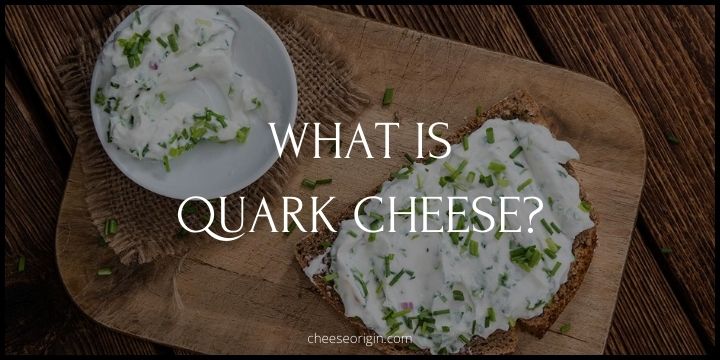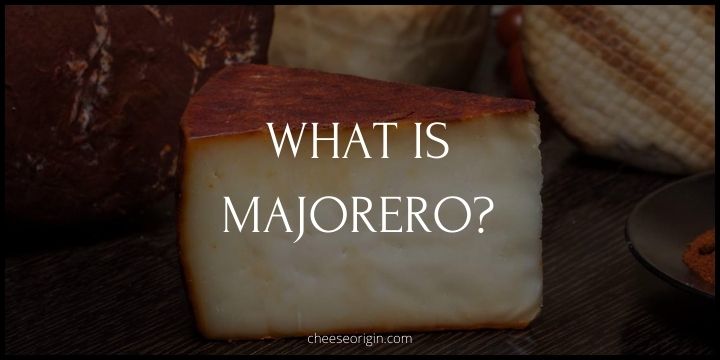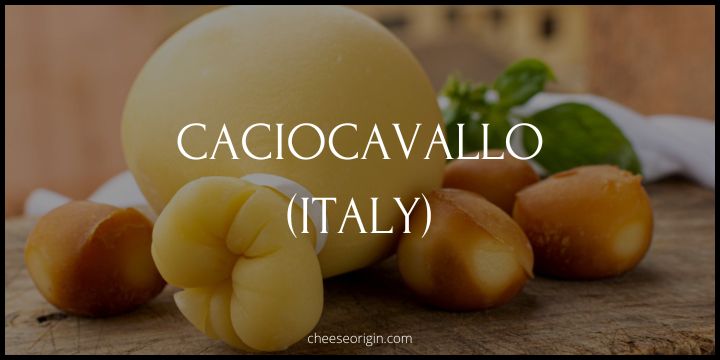What is Dorblu? The Blue Cheese with a Golden Touch

Dorblu, the blue cheese with a golden touch, is a culinary delight for cheese connoisseurs worldwide. Originating from Germany, this blue-veined marvel is renowned for its unique, sharp flavor and creamy consistency. It’s not just cheese – it’s an experience. Whether you’re pairing it with wine, adding it to gourmet recipes, or enjoying it on a cheese board, Dorblu brings a touch of opulence to every bite. Embrace the taste of Dorblu, where boldness meets elegance in perfect harmony.
Quick Facts About Dorblu
| Fact Category | Details |
|---|---|
| Origin | Germany |
| Cheese Type | Blue Cheese |
| Milk Source | Cow |
| Texture | Semi-soft |
| Flavor Profile | Mildly sharp, slightly tangy, rich and creamy |
| Color | Pale yellow with blue veins |
| Aging Time | At least 8 weeks |
| Popular Uses | Salads, pasta, cheese boards, with fruits and wine |
| Pairings | Sweet wines like Riesling, Port or Sauternes |
| Nutrition | High in protein, calcium, and vitamin B12 |
| Storage | Best stored in a refrigerator, wrapped in foil |
| Availability | Widely available in Europe, can be found in specialty cheese stores worldwide |
| Varieties | Dorblu Classic, Dorblu Royal |
| Production Method | Made using traditional German cheese-making techniques |
| Unique Feature | Known for its distinctive blue veins and mild flavor compared to other blue cheeses |
What is Dorblu?

Dorblu, a gem in the realm of cheeses, hails from the heartlands of Germany. It belongs to the illustrious family of blue cheeses, instantly recognizable by its pale yellow canvas streaked with distinctive blue veins. But don’t let its striking appearance intimidate you; Dorblu is known for its pleasantly mild flavor that sets it apart from its more pungent blue cheese cousins.
This semi-soft cheese offers a rich, creamy texture that’s a delight to the palate. Each bite delivers a mildly sharp, slightly tangy taste, which makes it a versatile choice for both cooking and standalone enjoyment. Whether it’s gracing a well-curated cheese board or elevating a pasta dish, Dorblu shines in various culinary applications.
Crafted from cow’s milk, Dorblu is aged for at least eight weeks, allowing it to develop its unique flavor profile. Its production involves traditional German cheese-making techniques, resulting in a cheese that’s not just delicious but also steeped in heritage.
To fully appreciate Dorblu, pair it with sweet wines like Riesling, Port, or Sauternes. The sweetness of these wines beautifully complements Dorblu’s tangy notes, creating a symphony of flavors. Beyond wine, Dorblu is an excellent companion to fruits, salads, and even desserts.
In essence, Dorblu is a testament to the beauty of cheese-making—a perfect blend of tradition, artistry, and flavor. It’s a cheese that invites you to explore and appreciate the wonderful diversity of the world of cheeses. So, the next time you’re in the mood for a cheese adventure, remember Dorblu—a blue cheese that’s truly in a league of its own.
What Does Dorblu Taste Like?
Dorblu features a delicate flavor that’s enhanced by a touch of piquancy, making it a delightful addition to salads and snacks. This unique cheese offers an unusual combination of spicy and salty notes, underlined by a bright aroma that’s unmistakably Dorblu.
The authentic Dorblu is not just a soft cheese containing milk, salt, and special molds, but also one that carries a spicy aroma. The complexity of its flavor profile makes it a favorite among those who love and understand the taste of blue cheese.
Interestingly, Dorblu is tediously marbled, which gives it a plethora of excellent flavors. When used in slow cooking, it becomes meltingly soft, further enhancing its appeal. The rich flavor and savory aroma of this exquisite cheese evoke positive emotions, making the experience of enjoying Dorblu truly unique.
Whether enjoyed as an independent product or used in various culinary variations, the wonderful taste of Dorblu shines through. Its amber color hints at its spicy flavor and slightly bitter taste, which locals often enhance by grating it and mixing it with tasty butter.
In comparison to other blue cheeses, such as Gorgonzola, Dorblu stands out with its unique blend of sharp, salty, and slightly spicy flavors. Its strong aroma further sets it apart, making Dorblu a cheese that’s truly in a league of its own.
Dorblu Tasting Notes
- Color: Dorblu has a pale yellow color, with distinctive blue veins throughout.
- Texture: Semi-soft and creamy, it offers a satisfying mouthfeel.
- Flavor: It has a unique flavor profile that is mildly sharp, slightly tangy, and subtly spicy.
- Aroma: Dorblu carries a strong, spicy aroma that’s unique to this type of cheese.
- Taste: The taste is a complex blend of salty, spicy, and slightly bitter notes.
- Aftertaste: It leaves a lingering, slightly salty aftertaste.
- Unique Feature: Unlike other blue cheeses, it’s known for its mild flavor and rich, creamy texture.
What are the Ingredients in Dorblu?
| Ingredient | Description |
|---|---|
| Pasteurized Cow’s Milk | The primary ingredient in Dorblu provides the base for the cheese. |
| Salt | Added to enhance the flavor and aid in the cheese-making process. |
| Vegetarian Rennet | Used to coagulate the milk during cheese-making. This type of rennet is suitable for vegetarians. |
| Penicillium | A type of mold that gives Dorblu its distinctive blue veins and contributes to its unique flavor. |
| Microbiological Leaven | Helps in fermentation, contributing to the cheese’s texture and flavor. |
| Lactic Acid Agents | Used in the cheese-making process to acidify the milk. |
| Agents for Maturing | These are used to age the cheese, allowing it to develop its unique flavor over time. |
| Fat | Dorblu has a 50% fat content, contributing to its rich, creamy texture. |
How to Eat Dorblu?
- Savor Solo: Enjoy Dorblu in its purest form. Let the cheese come to room temperature before eating to fully experience its rich, creamy texture and sharp flavor.
- Pair Perfectly: Dorblu pairs exquisitely with fruits like pears and figs. The sweetness of the fruit complements the salty tang of the cheese, creating a delightful contrast of flavors.
- Culinary Creations: Use Dorblu to elevate your cooking. Crumble it over salads, melt it into pasta, or use it as a decadent topping for steaks and burgers.
- Cheese Board Champion: Make Dorblu the star of your cheese board. Surround it with a variety of nuts, breads, and condiments for an impressive display.
- Sweet Surrender: Pair Dorblu with sweet elements like honey or dark chocolate. The combination of sweet and savory will tantalize your taste buds.
- Bake It: Try baking Dorblu into a quiche or a tart. The heat will soften the cheese and deepen its flavor, making for a luxurious treat.
- Wrap It Up: Wrap Dorblu in prosciutto or salami for a quick yet sophisticated snack. The salty meat and pungent cheese are a match made in heaven.
- Dress It Up: Use Dorblu to add a gourmet touch to your dressings and sauces. Its bold flavor can transform even the simplest vinaigrette.
10 Best Dorblu Substitutes
| Substitute | Description |
|---|---|
| Gorgonzola | An Italian blue cheese with a similar crumbly texture and a slightly milder flavor. |
| Roquefort | A French blue cheese made from sheep’s milk, it has a tangy, sharp flavor that can replace Dorblu in recipes. |
| Stilton | A British blue cheese that is creamier and less salty than Dorblu, but still a good substitute. |
| Danish Blue | This cheese is milder and less complex than Dorblu, but it has a similar blue veining and creamy texture. |
| Bleu d’Auvergne | A French blue cheese that is stronger and spicier than Dorblu but can work well in most recipes. |
| Cambozola | A German cheese that is a combination of Camembert and Gorgonzola, it has a creamy texture and mild flavor. |
| Picon Bejes-Tresviso | A Spanish blue cheese that is more intense than Dorblu but can be used as a substitute in cooking. |
| Cashel Blue | An Irish blue cheese that is creamy and mildly spicy, it can replace Dorblu in most recipes. |
| Fourme d’Ambert | Another French blue cheese that is milder and less salty than Dorblu, it can work well in salads and pasta dishes. |
| Cabrales | A Spanish blue cheese that is stronger and more robust than Dorblu but can be used as a substitute in many recipes. |
What Pairs Well With Dorblu?

Food that goes well with Dorblu:
| Category | Food |
|---|---|
| Fruits | Pears, figs, apples, grapes |
| Nuts | Walnuts, almonds, pecans |
| Breads/Crackers | Artisan bread, whole grain crackers, baguette |
| Meats | Prosciutto, salami, roast beef |
| Vegetables | Roasted mushrooms, grilled asparagus, caramelized onions |
| Seafood | Smoked salmon, grilled shrimp, seared scallops |
| Condiments | Honey, fig jam, balsamic glaze |
| Sweets | Dark chocolate, dried dates, candied ginger |
| Grains | Quinoa, farro, wild rice |
| Pasta | Fettuccine, penne, gnocchi |
Also read: 11 Best Crackers that Pair Well with Cheese
Beverage that goes well with Dorblu:
| Category | Beverage |
|---|---|
| Wines | Prosecco, Ruby Port wine, Sauvignon, Semillon, Sauternes, Monbazillac |
| Beers | Craft beers with fruity or spicy notes |
| Non-Alcoholic Beverages | Tea, Coffee, Drinking chocolate, Lemonade, Soda |
| Spirits and Liquors | Brandy, Whiskies with a sweeter and fruitier taste |
| Sparkling Wines | Champagne, Sparkling white wine |
Also read: Best Wine and Cheese Pairings: The Ultimate Guide
Also read:
- 10 Most Popular Cheeses Originated in Scotland
- Top 11 Most Popular Fresh Cheeses in the World
- What is Devon Blue? The Blue Jewel of Britain
- What is Cabrales? Spain’s Artisan Blue Cheese Delight
- What is Picos de Europa? Spain’s Blue Cheese Gem
- What is Monte Enebro? The Tangy Temptation
- What is Stichelton? The True Stilton’s Alternative





